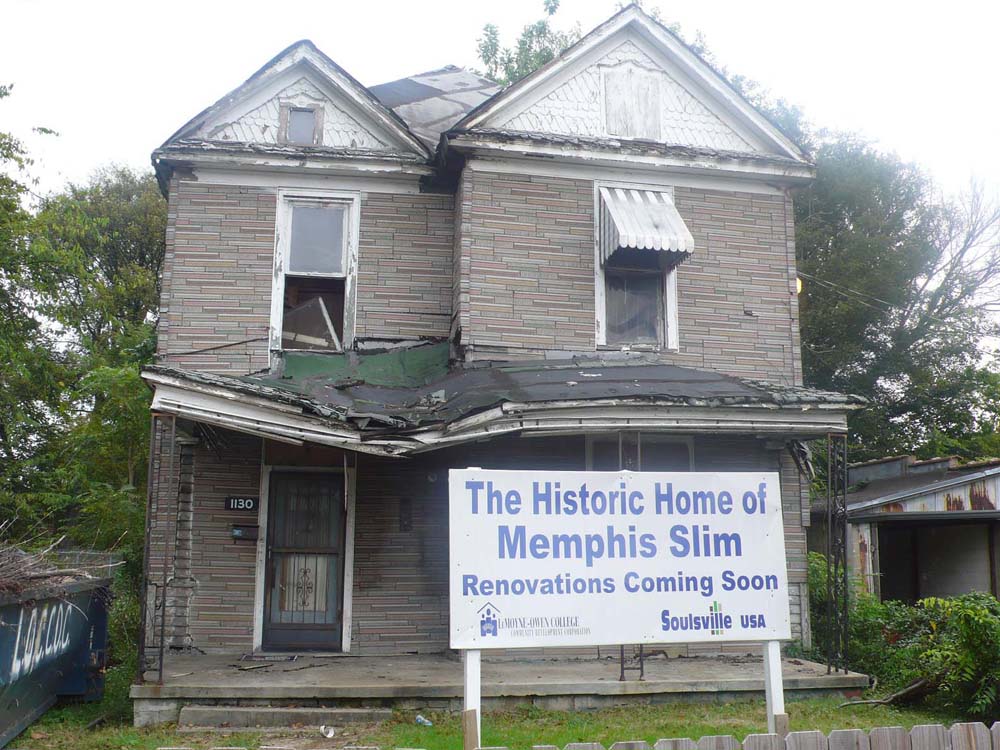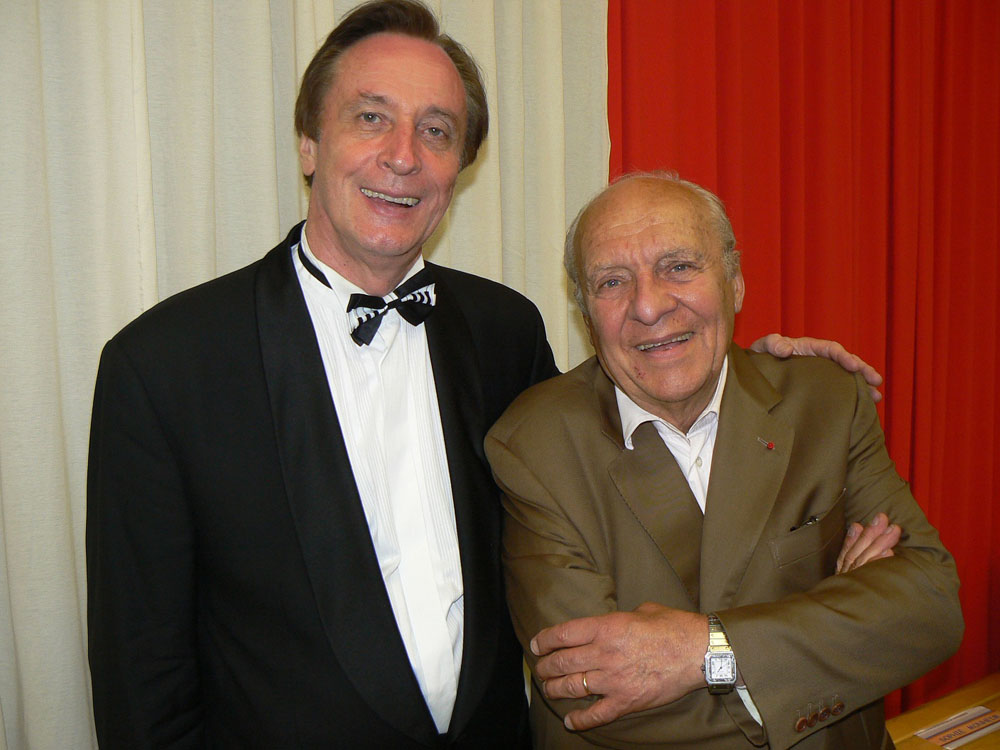
The Artistry and Scholarship of Jean-Paul Amouroux
by John Tennison, MD March 2, 2012
Jean-Paul Amouroux has the distinction of being one of the world's greatest and most prolific Boogie Woogie players and at the same time having published many scholarly articles about Boogie Woogie in the French blues magazine, Soul Bag, and in the form of liner notes to Boogie Woogie albums.
Jean-Paul's annual Boogie Woogie festival is said to be the largest in the world (70 musicians planned for 2012) and is host to some of the best Boogie Woogie players alive today. The website for the festival is at: Festival de Boogie Woogie La Roquebrou
Over the span of his life, Jean-Paul has collected a large archive related to Boogie Woogie. I am grateful to Jean-Paul for agreeing to allow me to display items from his archives that he has sent me.
I will be expanding my commentary on these items from the Jean-Paul Amouroux collection in future updates to this webpage.
Jean-Paul Amouroux and Claude Bolling

Pictured above is Jean-Paul Amouroux and Claude Bolling on August 12, 2011 at Jean-Paul's 2011 La Roquebrou Boogie Woogie Festival. Claude Bolling has the distinction of being the first native European to record a full album in the style of Boogie Woogie. Titled "Original Boogie Woogie," this 1968 album by Claude Bolling was a very important milestone album for several reasons:
1.) "Original Boogie Woogie" is one of the best Boogie Woogie albums ever recorded.
2.) "Original Boogie Woogie" established the fact that Boogie Woogie was taken seriously enough by Europeans to justify a complete album dedicated to the Boogie Woogie style.
3.) Because of Bolling's "Original Boogie Woogie" album and because of published sheet music from the album, many people in France, and Europe more generally, discovered and were motivated to learn to play Boogie Woogie. "Original Boogie Woogie" probably did more to popularize Boogie Woogie in Europe than any other single album.
4.) The extensive liner notes in "Original Boogie Woogie" exemplify the tradition of excellence in French scholarship, which continues to this day by people such as Jean-Paul Amouroux.
Other noteworthy albums in Bolling's "Original" series include "Original Ragtime" in 1966 and "Original Piano Blues" in 1969.
According to Amouroux, after Claude Bolling, the second native European to record a dedicated Boogie Woogie album was Rob Agerbeek (from Holland), who recorded "Boogie Woogie Party" on November 3-4, 1971 (CBS 64795).
Jean-Paul Amouroux at the Grave of Memphis Slim
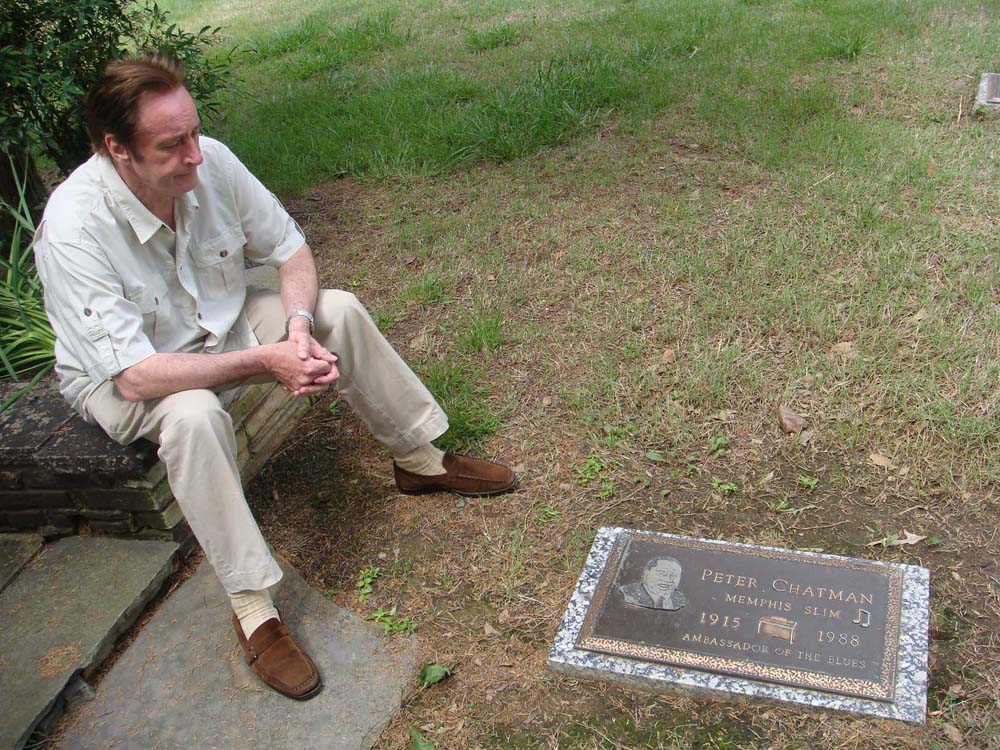
Discography of Jean-Paul Amouroux -- 40 Albums
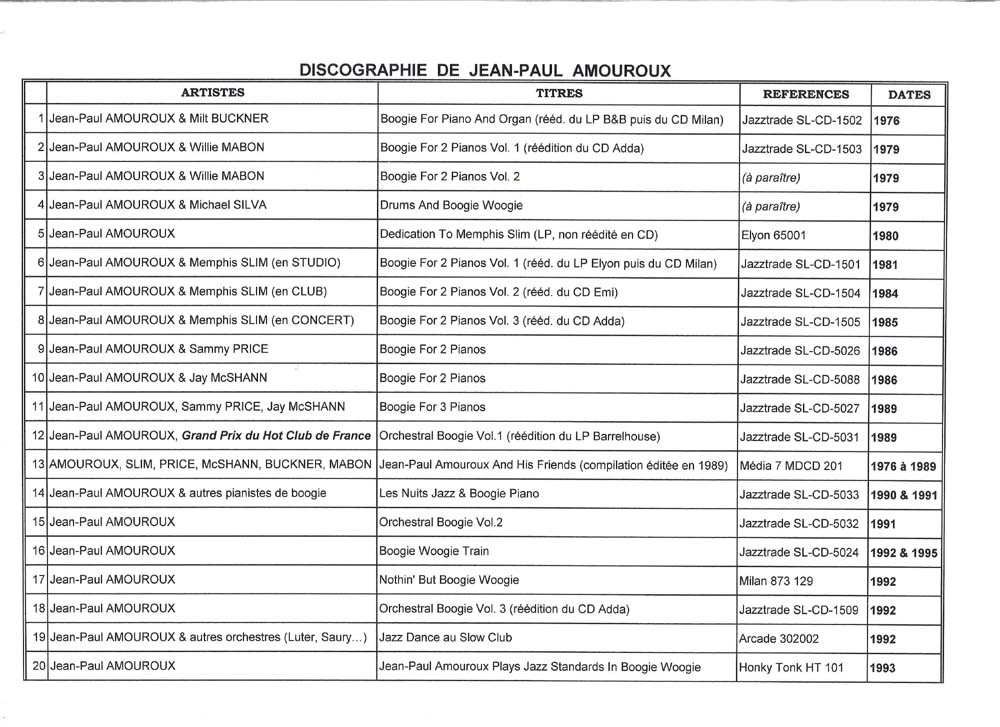
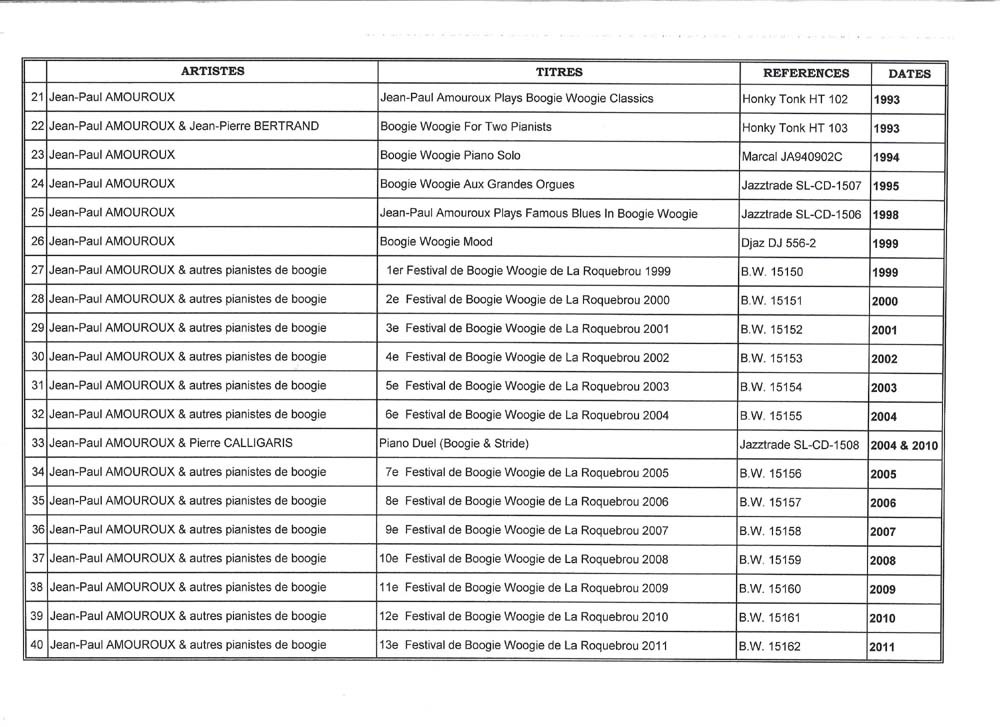
Letter from Lloyd Glenn to Jean-Paul Amouroux
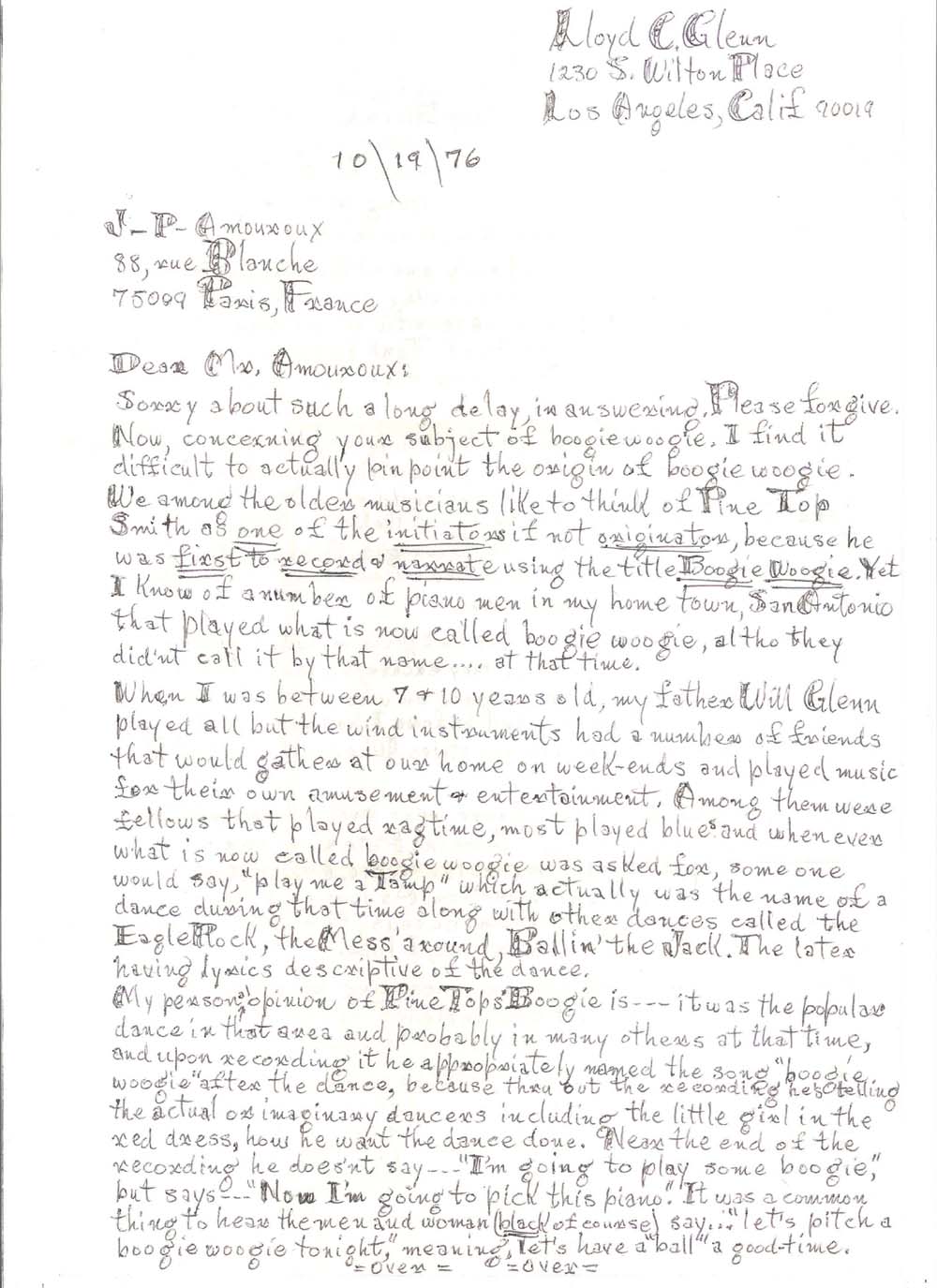
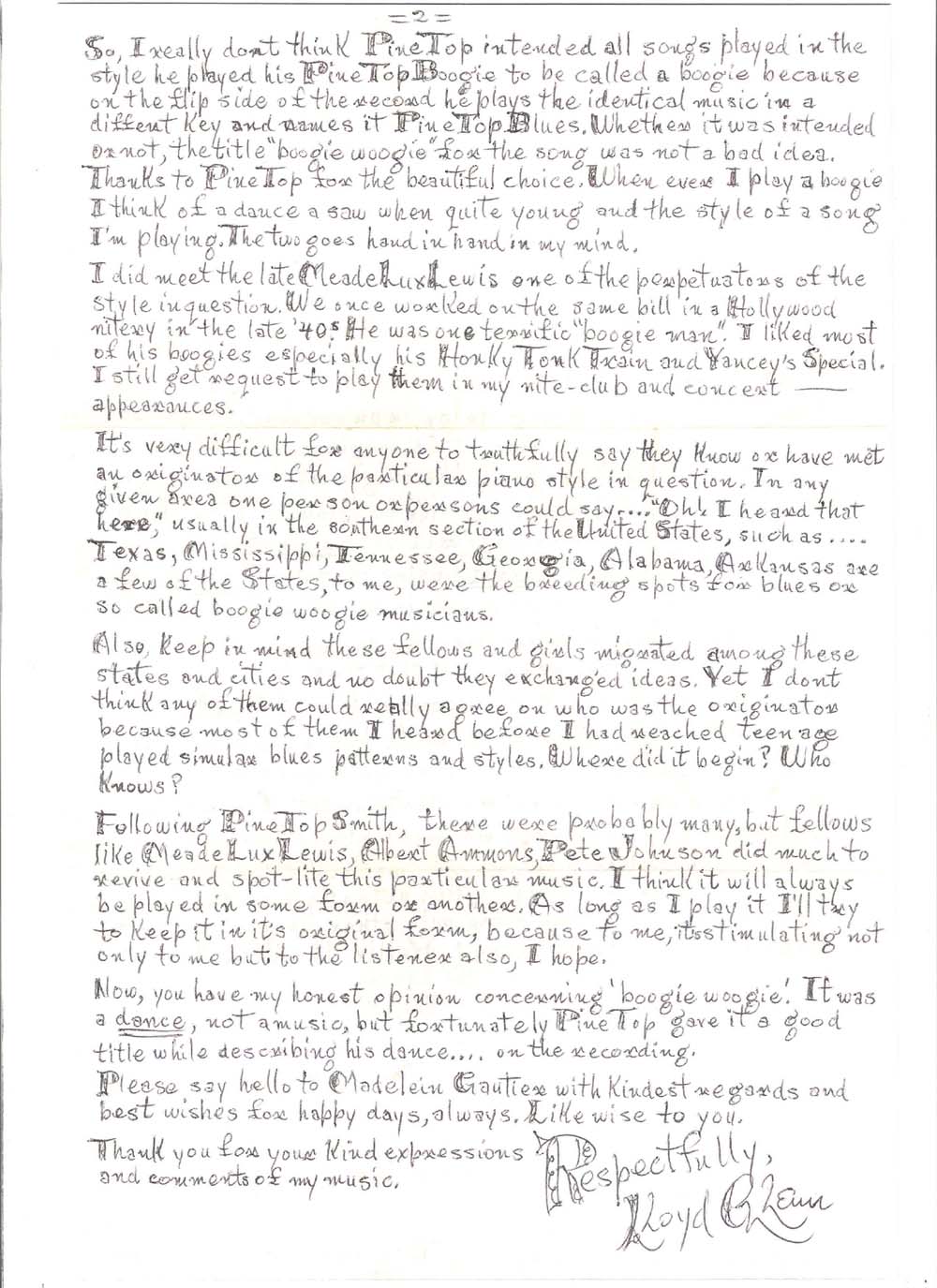
The above letter from Lloyd Glenn indicates that Glenn heard Boogie Woogie music being played in San Antonio, Texas when Glenn was a boy between ages 7 and 10 years old, meaning between 1916 and 1919 (since Glenn was born on November 21, 1909). Glenn indicates that he did not hear such music called "Boogie Woogie" in San Antonio during that period, but that the performance of such music was invoked when someone said, "Play me a Tamp." However, Glenn was just a boy living a rather sheltered life with his mother and father at his house when he heard the piano music he is describing. So it is conceivable that the piano players who came to Glenn's house respectfully refrained from using what might be considered obscene words for the music, such as "Boogie Woogie," around a child. Glenn indicates that "Tamp" was the name of a dance at that time in San Antonio. The word "tamp" suggests stomping. Indeed, I have heard historical accounts of dance parties being held in newly-built structures with dirt floors specifically for the purpose of creating a more functional floor by "tamping down" the dirt to a denser, harder, and less-dusty consistency. The fact that Lloyd Glenn did not encounter the term "Boogie Woogie" in San Antonio between 1916-1919 to refer to the music we now call "Boogie Woogie" is consistent with the conclusion that "Boogie Woogie" was a likely still a regional term used in such places as Northeast Texas by Blind Lemon Jefferson ("Booga Rooga") and in places like Texarkana as described by Wilbur Smith and Smith's father. The fact that Little Brother Montgomery also seems to not have been familiar with the term "Boogie Woogie" to refer to piano music between 1619-1919 suggests that the use of the term "Boogie Woogie" and "Booga Rooga" were possibly not yet being used to refer to music other than in the Arklatex (the confluence of Arkansas, Louisiana, and Texas) in the time period between 1916 and 1919.
Letter from Pete Johnson to Boogie Woogie Musician, Jean Peron Garvanoff

Letter Written by Albert Ammons

Historic Home of Memphis Slim
